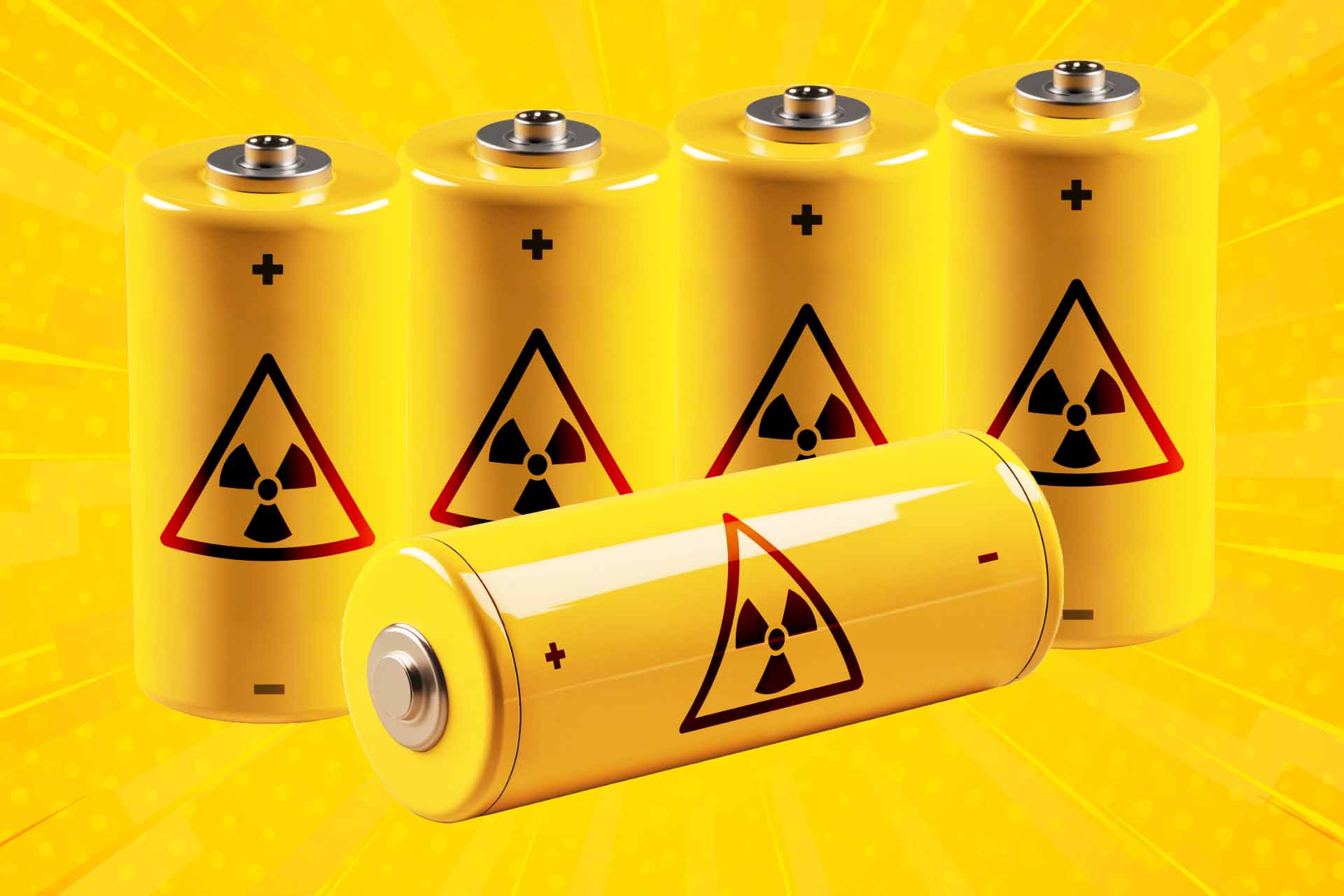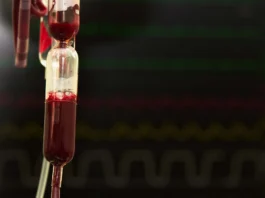Imagine never needing to recharge your phone, pacemaker, or satellite. It sounds like a sci-fi script, but a recent announcement from Chinese researchers suggests a nuclear-based battery might make this real. According to sources at Northwest Normal University and Wuxi Beita Pharmatech, they’ve unveiled a carbon-14 “betavoltaic” battery – also dubbed a “nuclear battery” – that could power devices steadily for 50 years or more, and in extreme conditions it might live for a century. While it sparks visions of personal electronics that skip daily charging, the implications go well beyond gadgets to medical devices, remote sensors, and deep-space missions.
Is it truly feasible? And if so, how might it transform everyday life, from health care to outer space? Let’s unpack the details, the hype, and the sober realities.
Nuclear Battery 101: What’s a Betavoltaic Cell?
A betavoltaic device is not your typical battery. Rather than store energy chemically, it draws on low-level radioactive decay to generate electricity. Specifically, carbon-14 isotopes emit beta particles (electrons) with a long half-life—5,730 years. These particles strike a semiconductor material – think of a mini solar cell, but for electrons instead of photons. The result? A small but continuous trickle of electric current, day after day, year after year.
Key difference: Instead of waiting for the battery to discharge, you watch it gradually lose activity as carbon-14 decays into stable nitrogen-14 (or sometimes claims mention Nickel-63 decaying into copper). Because the decay is slow and the energy density is high, the device can reliably power a low-drain device for decades.
Zero-Emissions, Zero External Radiation?
Developers call it a “clean” energy source because it never releases external radiation in normal use. The beta particles are low-energy, blocked by a few millimeters of shielding. If the containment is robust, the user experiences no radiation exposure at all. At the end of its life, the carbon-14 is mostly spent, morphing into stable nitrogen or copper, leaving minimal nuclear waste. So from a user standpoint, it’s safe, quiet, and green.
Carbon-14 Tech: The Chinese Approach
Late in 2024, a separate group in the UK announced a diamond-based battery using carbon-14. But China’s approach, known as “Zhulong-1,” uses nickel or carbon isotopes inside a layered structure with a silicon carbide semiconductor for improved electron capture. The device is said to remain stable between minus 100°C and plus 200°C, with less than 5% degradation in 50 years – which might effectively double in extreme scenarios.
Professor Su Maogen at Northwest Normal University says they plan to launch a second-gen “Zhulong-2” sized like a coin, hopefully by next year. They also aim to reduce manufacturing costs for bigger commercial viability. Meanwhile, Chinese nuclear facilities began large-scale carbon-14 production in Zhejiang in 2023, ensuring local supply and cutting reliance on imports.
If It’s Real, Where Could It Shine?
- Medical Implants
Pacemakers and brain stimulators often rely on surgery to replace lithium-ion cells every 10–15 years. A nuclear battery lasting multiple decades could save repeated operations. That’s a huge boost to patient safety and healthcare cost savings. - Space & Deep-Sea Missions
If your rover or submersible can’t get sunlight, you need a steady, no-maintenance power source. Betavoltaic cells thrive in these scenarios—operating for many years with zero charging, minimal risk, and negligible weight penalty. - IoT Sensors
If 5G networks or remote sensors measure environmental data in farmland or polar regions, it’s tough to run cables or swap out standard batteries. A small nuclear battery feeding micro-watt power is enough to keep sensors alive, collecting and transmitting data for decades. - Consumer Electronics?
If you’re dreaming about a smartphone you never charge, slow down. These nuclear cells produce microwatts or nanowatts – that’s nowhere near enough for streaming Netflix. But they might function as a “trickle charger” for a typical lithium-ion battery, drastically cutting how often you plug in. Over time, the synergy could be game-changing if we find ways to boost betavoltaic output.
A Seismic Shift for Energy?
Betavoltaic devices could redefine how we think about power:
- No Recharging: Freed from cords, we could see more robust wearable devices, mini-robots, or remote infrastructure.
- Extreme Longevity: A 50-year battery in satellites or deep-space exploration means stable research for an entire generation.
- Military & Security: Drone fleets or sensors in remote hotspots can keep watch for years with zero logistic supply lines.
- Sustainability: Replacing billions of disposable or short-lifetime batteries with stable nuclear cells reduces e-waste.
The net environmental outcome depends on responsible production and end-of-life disposal. But the carbon-14 decay eventually leaves stable, non-radioactive matter. That’s leaps ahead of typical “nuclear waste” from large reactors or high-level isotopes.
Weighing the Hype: How Practical Is It?
Naturally, bold claims beg a critical look:
- Power Output: Even advanced betavoltaics produce microwatts to milliwatts. That’s great for small sensors, but insufficient for power-hungry tasks without additional battery buffers.
- Cost: Large-scale carbon-14 production is complex. The prototypes are pricey. Will the cost fall enough for mainstream usage?
- Safety: Although external radiation is negligible, the device must remain sealed. If large-scale consumer use occurs, ensuring tamper-proof designs to prevent mishaps is crucial.
- Regulations: Many countries have stringent nuclear material regulations. Approvals might take years, especially for personal electronics or implants.
Professor Larry Olsen, a pioneer of betavoltaics in the 1970s, once noted that the technology fizzled in pacemakers due to cost and better lithium alternatives. Times have changed, though. Lower manufacturing costs and better semiconductors might resurrect that dream.
Your Battery Is Becoming Copper
One eye-catching detail is the claim that the battery becomes copper in 50 years. For Nickel-63 designs, that’s literally true. Nickel-63 decays into stable Copper-63. Carbon-14 decays into Nitrogen-14. Either way, the radioactive source eventually transitions to a safe material, removing concerns about long-term nuclear waste. “It’s like it dies gracefully, leaving no footprints behind,” jokes one material scientist.
For skeptics, the question is whether we’ll keep a device for 50 years. In consumer electronics, we rarely do. But for specialized gear—military beacons, pacemakers, deep-sea sensors—keeping them functional for decades is a boon.
Implications & Potential Impact
If mass production of these nuclear batteries in China picks up:
- Medical Miracles: Longer-living implants, fewer surgeries, better patient outcomes.
- Infrastructure Freedoms: Remote or hazardous areas get indefinite power for sensors, from traffic monitoring to scientific research.
- Change in War Tactics: Submarines, drones, and satellites might operate longer and deeper, shifting defense strategies.
- Economic Leverage: If only a few nations master cheap betavoltaic manufacturing, they get an edge. Think new tech exports, foreign licensing, and global partnerships.
- Eco Gains: Less e-waste, fewer chemical batteries, stable disposal route after the isotopes degrade.
Cautionary Tales
- Skepticism: Many big energy “breakthroughs” overpromise. We need peer-reviewed data on performance, cost, and safety.
- Availability: Early news stories mention possible infiltration in medical devices or small sensors. But for everyday phones or laptops? That might be decades away.
- Public Fear: “Nuclear battery” can trigger negative reactions. Even if the device is safe, acceptance might be slow if people imagine nuclear meltdown in their pocket.
- Security: Potential misuse as a radioactive source for malicious acts is a concern. Regulators must ensure tamper-proof designs.
Where We Go Next
Betavoltaic batteries have existed for decades, especially in space or critical applications. However, the Chinese claim of near-commercial readiness is unprecedented. Western watchers, too, see some synergy: NASA used radioisotope thermoelectric generators (RTGs) for deep-space missions, but these are large, high-power forms. Mini betavoltaics are a different class—like a rechargeable battery that recharges itself, never reliant on an external plug.
Industry watchers predict we’ll see the earliest large-scale adoption in specialized niches—medical implants, remote sensors, or security devices—then expansion into industrial or consumer spaces if the cost and power scaling align. Meanwhile, the technology’s biggest puzzle is bridging the wide gap between microwatt-level power and typical consumer electronics demands in the tens of watts.
Zhang Guanghui, the technical lead on the Chinese project, concluded, “Theoretically, it can last thousands of years if you rely on carbon-14’s entire half-life. But practically, we design for 50 or 100 years. By that time, it’s mostly stable, so disposal is easy.” That’s a radical shift from the short-lifespan lithium-ion world we know.
Taking Action or Waiting?
Should you hold off on upgrading your smartphone, hoping for a nuclear battery phone next year? Probably not. For now, these nuclear cells are more likely to replace coin batteries in remote sensors or fueling critical systems that must never fail. Over the longer term, they might become an integral part of a broader hybrid approach—like combining them with a supercapacitor or standard battery for peak loads.
Still, the concept underscores a hopeful shift in how we might do portable energy in the future—fewer disposals, less frequent recharging, and stable operation in extremes. The next step is verifying performance in real deployments. If prototypes pass muster in areas like medical devices or satellite beacons, we’ll see broader adoption.
In the meantime, pay attention to official announcements from credible universities, nuclear agencies, or peer-reviewed papers. If progress continues at the rumored pace, we might look back in 10 or 20 years at our daily phone charging routine and wonder how we tolerated it. Because if a no-charge battery can last 50 years, that might become the new normal.
Would you trust a nuclear battery powering your devices? The mere question can spark debate. But if the claims pan out—and if engineers master cost and safety—this technology could revolutionize personal electronics, health care, space flight, and beyond. It all starts now, with carbon-14 decaying quietly in a sealed chip, forging a path toward a future we once labeled impossible.





The future is wild
Imagine charging your phone once… and never again for 50 years
Mad respect to the scientists pushing boundaries
Sounds amazing until you realize it outputs less power than a potato battery.
How long before one of these ends up in a landfill and starts mutating seagulls?
Bet this still won’t stop my remote from dying during a Netflix binge
If this helps eliminate disposable batteries, I’m all for it.
지속 가능한 에너지 기술에 있어서 놀라운 도약